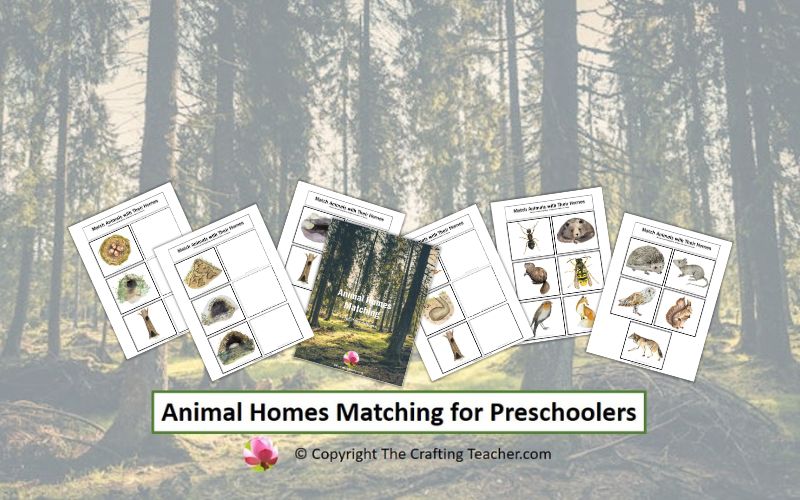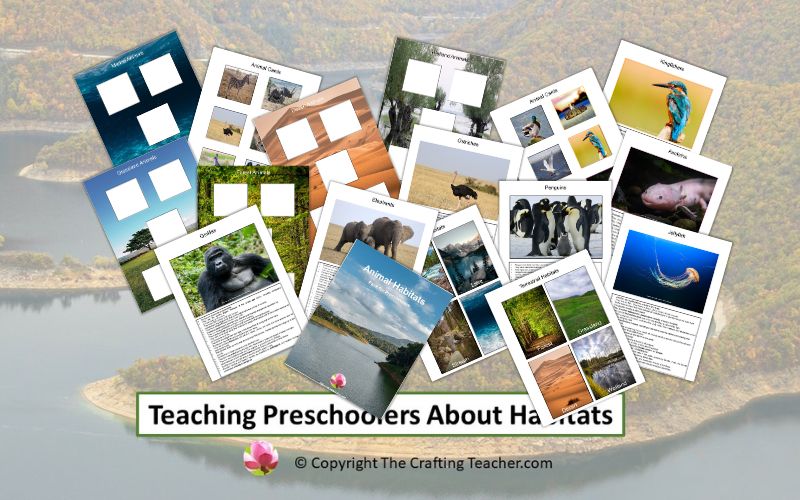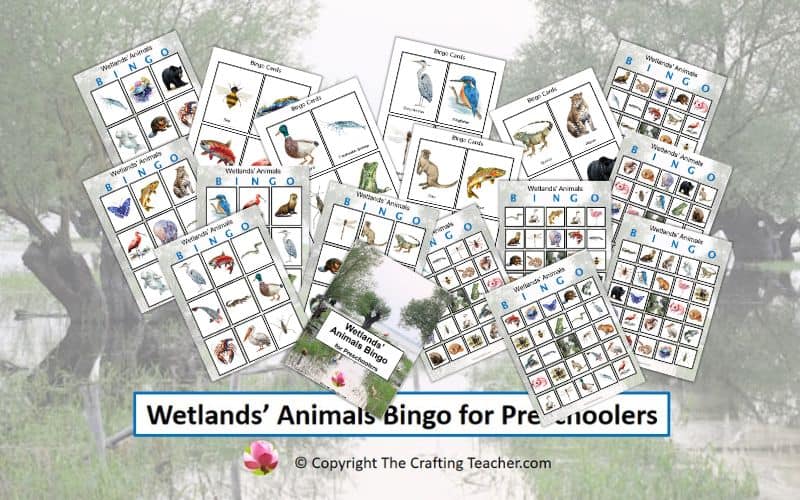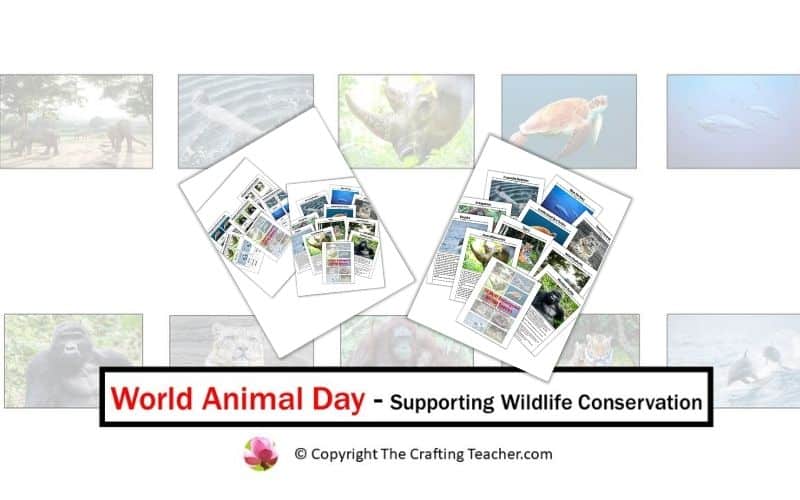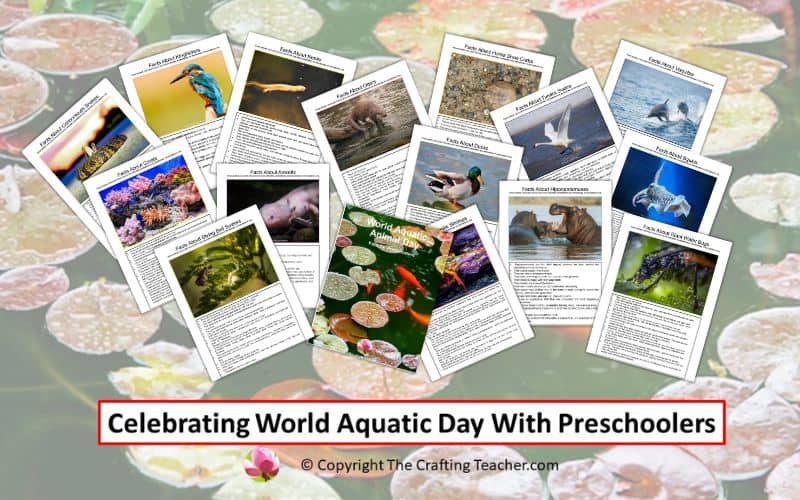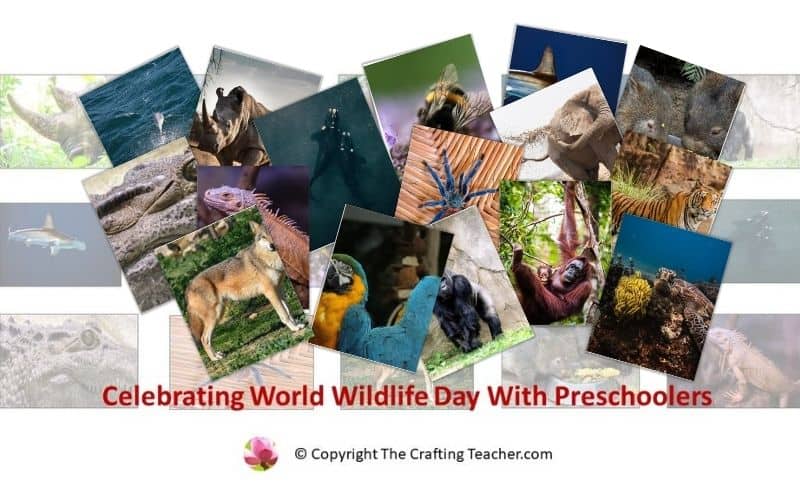Animal Homes Matching for Preschoolers
Affiliate Disclosure: “This post contains affiliate links, which means I receive a small commission, at no extra cost to you, if you make a purchase using those links.”
Most children are curious about animals and where they live, and this FREE, fun, hands-on Animal Homes Matching activity is a good way to start teaching your preschoolers about some of the animals they are familiar with, and where they make their homes.
This Animal Homes Matching activity is perfect for a science center, teaching kids about where some animals make their homes and comparing the differences. It can also complement your animal theme as a summer, take-home, or quiet area activity, entertain the children while traveling, or simply enrich the science part of your curriculum. It can be used at school or at home.
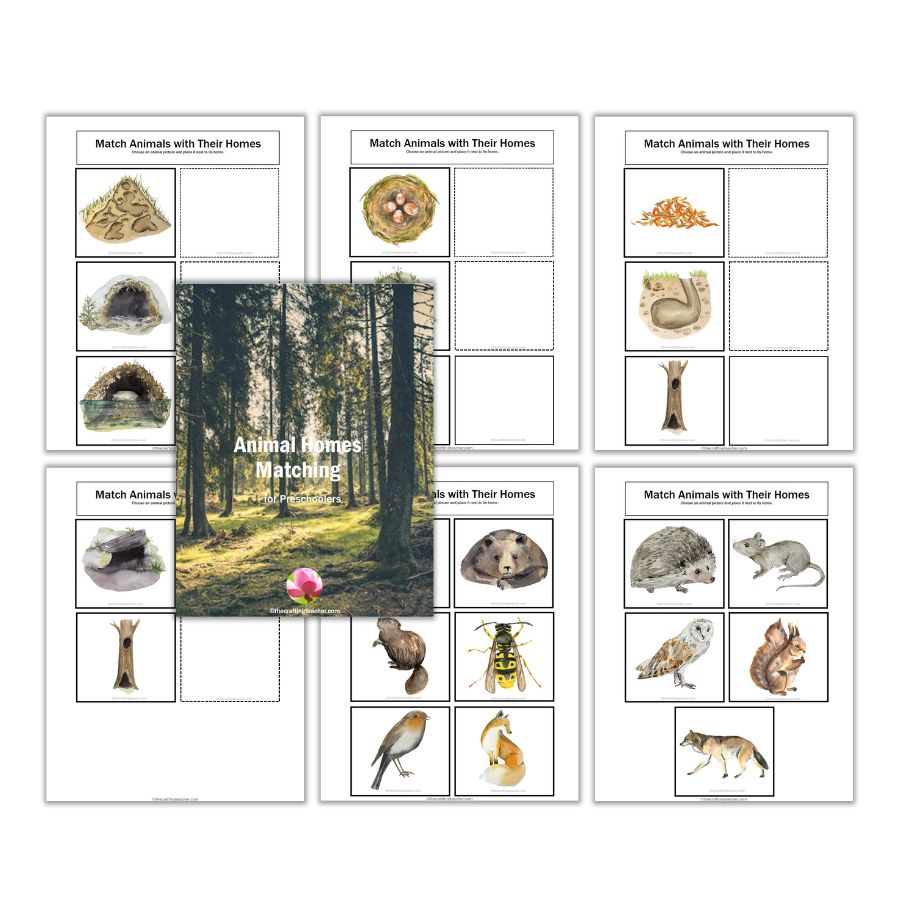
This activity includes four sheets with eleven homes and two sheets with the animals that live in them. You can find it at the end of this post.
Importance of Matching Activities
Matching and classifying objects is a type of activity that helps children develop critical mathematical and literacy skills, such as:
- Identify relationships between objects, places, or people.
- Visual discrimination.
- Problem-solving.
- One-to-one correspondence.
- Fine motor skills.
- Language and vocabulary.
Learning about these animals and their homes also helps children develop scientific thinking, communication, observation, and critical thinking skills.
Animal Homes Matching
Whether you are a parent, teacher, or homeschooler, this easy-to-prep activity will complement your lesson about animal homes. It will help children identify the type of habitats where some animals live, improving their understanding of the animal world.
To start the activity, talk to the children about the different animals. Encourage their scientific thinking by having them look at the different animals and discuss what characteristics allow them to survive in the different types of homes they use. Invite children to compare the different homes and explain why they think one animal doesn’t live in the home of a different one, and what makes them unique.
After you finish this discussion, give children this Animal Homes Matching activity and have them place the animal cards next to their homes.
To prepare the reusable activity, print all the pages on white cardstock. Cut out the animal cards and laminate everything for durability.
You can also use these cards to prepare a different matching game. For that, you only need to print two sets of the animals, homes, or both, and have your children place the cards upside down and try to find the matching pair.
Books About Habitats
As I mentioned before, there is no such thing as too much reading for me. The more you read to your children, the better. Changing your library periodically according to the theme and season is essential to keep them interested and excited about books.
Below are some books about habitats. You can find all these books at your local library, a used bookstore, and on Amazon. To get to the page of a specific book on Amazon, you only have to click on the title, and my affiliate link will take you there in seconds.
- Who Lives Here? Polar Animals by Deborah Hodge discusses the polar region and the fantastic animals whose bodies are built for living in the extreme cold, finding food, and raising their young in a polar habitat of thick ice and snow.
- Who Lives Here? Desert Animals by Deborah Hodge explains how each animal’s body is suited to live in this arid place, using realistic illustrations, playful language, and intriguing facts.
- Who Lives Here? Rainforest Animals by Deborah Hodge describes the animals whose bodies are built for living among tall trees and lush green plants. They have unique ways of finding food, staying safe, and raising their young in a warm, wet tropical forest.
- Who Lives Here? Forest Animals by Deborah Hodge describes how the forest is home to incredible animals whose bodies are built for living among the trees in cold weather. Black bears, wolverines, loons, and other animals have particular ways of keeping warm, finding food, and raising their young in a forest habitat with lakes and rivers, short summers, and long winters.
- Who Lives Here? Savanna Animals by Deborah Hodge describes the savanna, home to exciting animals whose bodies are suited to living on the warm, grassy plain. Elephants, giraffes, lions, meerkats, zebras, and other animals have special ways of finding food, raising families, and protecting themselves in this habitat with long dry seasons and shorter rainy seasons.
- Who Lives Here? Wetland Animals by Deborah Hodge. Wetlands are home to amazing animals whose bodies are built for living in or near water. Hippos, crocodiles, and anacondas have special ways of finding food, staying safe, and raising their young in a watery habitat.
- A Home Can Be…. by Stephanie Seidler. From a floating house on the water to a treehouse built high in the branches, each page showcases a new and unique dwelling, celebrating the diversity of habitats and the creativity of those who make them.
- About Habitats: Oceans by Cathryn Sin uses simple, easy-to-understand language and beautifully detailed paintings to teach children about oceans, the kinds of animals and plants that live there, and why oceans are essential.
- Tall, Tall Tree by Anthony D. Fredericks discusses the magnificent California coast redwood, the animals that live there, and its surrounding environment, using a counting format and rhyming text.
- Animal Homes by Shira Evans is a National Geographic book that uses brilliant photos to introduce children to vocabulary in concept groups, help them connect words, and expand their understanding of the world.
- Animal Habitats by Lundgren teaches children about different species of animals and the habitats they use for food and protection.
Pin It For Later
If you are in a rush and don’t have time to read the post and download the printable, but want to save it for later, pin this to one of your boards on Pinterest.
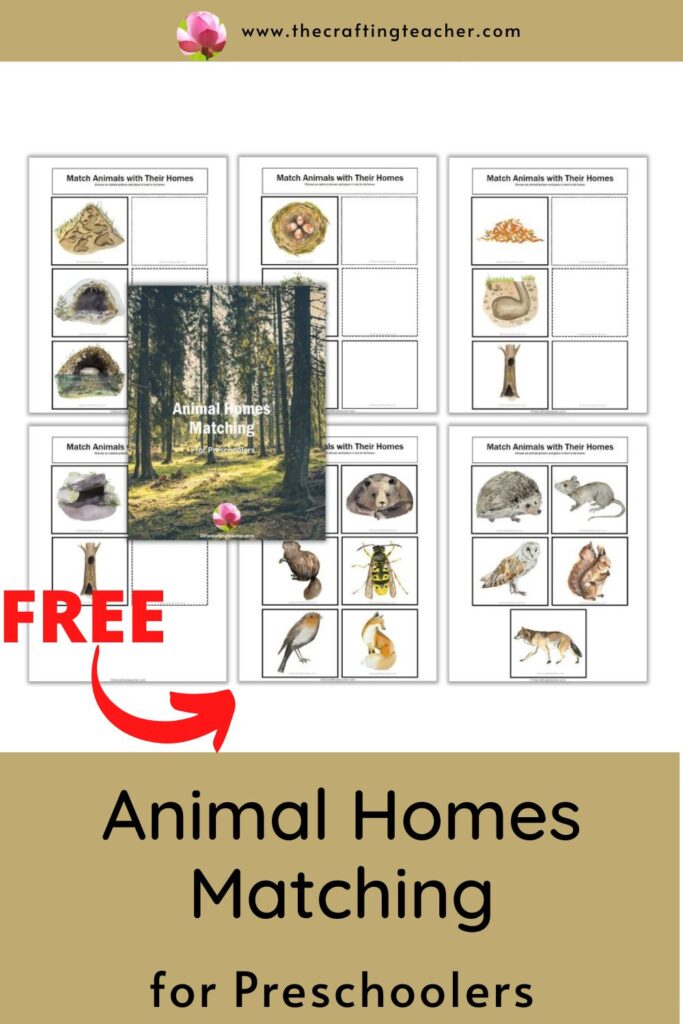
It is essential to offer preschoolers different types of activities to help them learn in a fun way. You might want to combine this activity with others that complement it for a more comprehensive teaching-learning process. You can find some good ideas HERE.
I hope you find this activity helpful in teaching your kids about animal homes. Don’t forget to get your FREE Animal Homes Matching activity. Click on the button below to download it and start using it.
Be happy, safe, and creative. I wish you well.
Love,
P.S. Please let me know if this activity works for you, and if you would like to see an article or a printable about something specific, I will try my best to create it for you.

